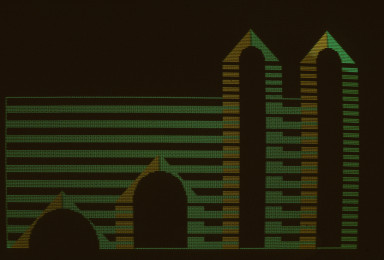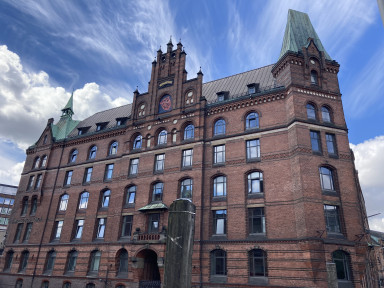Digitalization for sustainability in the German construction industry
Opportunities and barriers to the behaviour of building professionals using ‘digital solutions’ for a future-proof sector
The construction industry is facing major challenges in light of current developments such as population growth, climate change, and urbanization. At the same time, contemporary phenomena such as war, resource scarcity, skilled labour shortages, and ecological crises are complicating the necessary transformation of the sector, leading to far-reaching consequences for the planet, as well as delays and cost explosions. In addition to the pressure this creates in regard to socially, ecologically, and economically sustainable development, for which a ‘fundamental rethink’ (i.e. a paradigm shift) is often discussed, a simultaneous push towards greater digitalization across construction practices can be observed. Digitalized work processes are associated with the hopeful narrative of increased efficiency, optimization potential, and a disruptive character but also come with multiple costs which are often externalized. In addition to efficiency, sufficiency and consistency are also necessary for effective sustainable action. The question of the extent to which these assumptions are justified, or whether this is an attempt at a technological fix,1 whereby only misguided developments are optimized, marks the starting point of this project.
- sustainable action
- distributed agency
- digital solutions
- capacity theory
- problem-centred interviews
Context
Regarding the use of technology for problem solving, Volker von Prittwitz2 presents the concepts of the catastrophe paradox and capacity theory: according to the author, public communication takes place in the field of tension between risk perception and capacity for action. In order to avoid cognitive dissonance and a loss of legitimacy or identity, only problems that are perceived by the involved actors as ‘manageable’ are acknowledged. This is where the widely imagined potential of technology lies: Challenges associated with sustainability are characterized by difficult ‘capacity conditions’, as their effects or prevention are often felt in the more or less distant future or in remote locations. If improved capacities for action arise, for example through technological progress, this mechanism also works in a positive sense and can promote the formation or growth of responsibility, enabling both individual behavioural changes as well as politically and socially effective action. This raises the questions of whether, to what extent, and under which circumstances digital applications actually offer new capacities for action, or whether digitalization represents a so-called ‘helper market’ in which providers benefit from the process of coping with problems and are therefore not necessarily interested in their complete solution – in order to not make themselves obsolete.3
Aims
Given the high social and ecological relevance of the construction sector, the aim of this research is to explore the extent to which modern technologies offer potential for more sustainable practices, the problems and consequences their use entails for sustainability goals, and the share of agency attributable to technological artefacts.
Research interests are:
What are the attitudes of construction professionals towards digitalization ‘for’ sustainability? How do these professionals assess their capacity to act in this regard? What are their prevailing needs, dissonances, wishes, and hopes? Who are these directed at?
Which digital technologies are already in use, and what changes have they brought about? How are the new developments assessed and implemented in terms of efficiency, sufficiency, and consistency?
What role does technology play in digital sustainability action in terms of defining sustainability goals and the effective, regulatory, and intentional dimensions of action?
In addition to providing scientific contributions, the research results are intended to demonstrate practical benefits and ultimately serve the interests of the affected building professionals and, consequently, support sustainability goals.
Research design
The core assumption of this work is that digital technology ‘co-acts’ and thus also influences the sustainability actions of actors in the construction industry. To this end, the concept of ‘gradualized action’ developed by Ingo Schulz-Schaeffer and Werner Rammert4 is used. In order to empirically test these considerations and achieve rich empirical descriptions of technicalized action, a distinction is made between three dimensions of action with regard to the distributed agency of humans and technology: the effective (realizing changes that lead to the goal of the action), the regulative (steering and controlling the execution of the action), and the intentional (goals of the action) dimensions of action. Problem-centred interviews are to be conducted with experts from planning disciplines who have been recognized for their sustainable construction practices. The material will be evaluated on the basis of grounded theory to reach a theory of ‘gradual sustainable action’.
Supervisors:
- Prof. Dr.-Ing. Martin Jäschke
- Prof. Dr. Joachim Thiel




